Pakistan Railways: the last on the scene
Institution has only two rescue trains and cranes, one of which was purchased in 1930
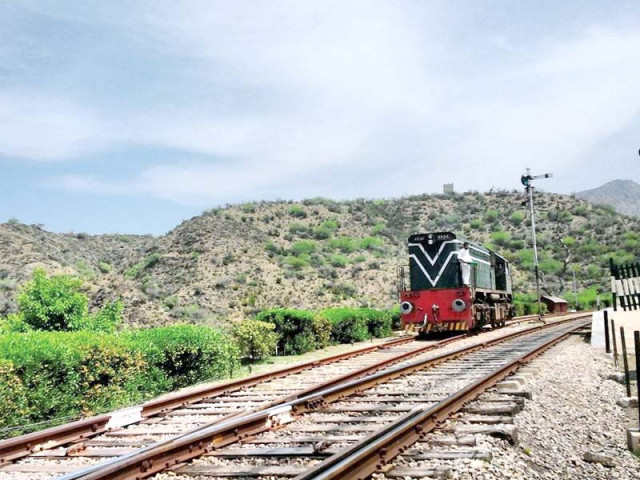
Institution has only two rescue trains and cranes, one of which was purchased in 1930. PHOTO: HIDAYAT KHAN/EXPRESS
The Pakistan Railways’ rescue train was the last to reach the site in order to evacuate passengers and participate in other rescue work when the Zakaria Express, which was coming from Multan, rammed into the last three bogies of the Fareed Express.
Pakistan Railways asked to adopt state-of-the-art technology
According to an official of the Pakistan Railways who works at the rescue train department, Pakistan Railways does not have the capacity to function in an emergency situation. The officer explained to The Express Tribune that Thursday’s accident occurred at around 7:30am but they were not able to reach the spot till 11am.
Two rescue trains and two cranes belong to the Pakistan Railways stationed at Cantt Station, according to the official. These trains are equipped with all kinds of equipment to deal with any emergency, including on-board medical professionals. “We have hydraulic jacks, gas-cutting machines and expenders, which are used to cut iron sheets,” he explained, adding that with this equipment they cut the bodies of the bogies and rescue passengers trapped inside.
One of the cranes, the official said, was built in 1930 and still runs on steam. Explaining how the crane is started, he said that they initially use diesel to start its engine and then light a fire with furnace oil, which heats the water in the engine, thereby creating steam.
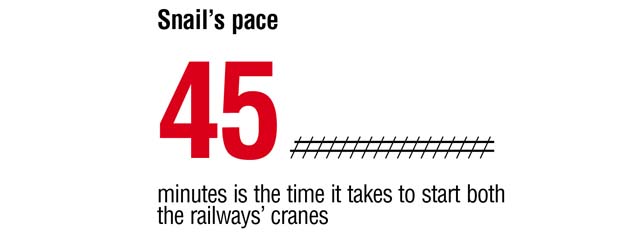
He said the whole process takes no less than 45 minutes. Once the crane starts functioning, they attach it to a rescue train, which has other rescue equipment in it as well, and then they have to travel all the way towards Clifton to turn and move towards the spot of the accident. The speed of their rescue train is not more than 60 kilometres (km) per hour though it should be 100 km per hour.
The second crane, said the official, was made in Germany and brought to their station in 2014. This crane, according to him, is computerised but takes around 45 minutes to attach to their rescue train due to its large hydraulic system.
Pakistan Railways suffers another loss-making year
Thursday’s accident
Regarding the Landhi train accident, the official explained that it took them several hours to gather their manpower and then start their rescue trains and cranes. “Even though our staff remain on standby round the clock, our trains and cranes are not up to the standard to reach the accident site on time,” he lamented.
The official said they reached the Landhi Station for the rescue operation at around 9:30am on Thursday but were not given the go-ahead by their senior officers to reach the exact site of the accident until 11am, as a huge mob had gathered and another accident could have occurred had they come through with their huge cranes.
However, he said, they could have saved several lives if the situation would have been slightly better for them. Karachi’s divisional mechanical engineer Shaukat Ali Mangi refused to comment on the issue.
Search for the cause: Human error or malfunctioning signals?
A number of plausible causes could be responsible for the deadly collision between two trains in Landhi that left 22 people dead and 65 others injured.
Human error or malfunctioning signals?
While it could be attributed to human error, malfunctioning of the automatic signals of Pakistan Railways could also be the cause. Nonetheless, only the driver can give testimony of the signal’s failure as the control room of Pakistan Railways has no reading available of its ‘automatic block section signals’.
An official of the Pakistan Railways, requesting anonymity, explained how the signals of Pakistan Railways work. According to him, there could be four to five signals at the Pakistan Railways stations. The official said that there are two signals just before the station - the first one is known as ‘outer’ and the second one is known as ‘home’, which are at a distance of nearly 580 metres from each other.
Apart from these two signals, he said that there are two or three other signals between the two stations, which are known as ‘block section signals’. The officers sitting in the control room of any particular station monitor the movement of the train within the limits of the outer and home signals on the screen. Once the train crosses the outer signal, said the official, the control room has no visibility of those ‘block sections signals’ or the train.
“Only the driver can tell if the block section signal was green or red in case an accident occurs,” said the official, adding that the block section signal turns automatically green when the train ahead has travelled a sufficient distance from that signal.
The accident
On Thursday, Fareed Express, which was coming from Lahore, was stationary at the outer signal of the Landhi Station at Jummah Goth. Meanwhile, Sukkur Express was also at a halt at the home signal of Landhi Station, as the ‘railroad switch’, which is a mechanical installation enabling trains to be guided from one track to another, was out of order.
Zakaria Express, which had set off from Multan, crossed the Bin Qasim Railway Station near Steel Mills and rammed into the last three bogies of the Fareed Express.
According to the Pakistan Railways official, the station master of the Bin Qasim Railway Station should not have given a go-ahead to the Zakaria Express without inquiring about the position of Fareed Express with the station master of the Landhi Station.
Also, when Zakaria Express crossed the Bin Qasim Railway Station’s signals, it must have been through the ‘block section signal’, which would have automatically turned red due to the presence of Fareed Express at the Jummah Goth signal. Since the driver of Zakaria Express claims to have received a green ‘block section signal’, the railway authorities do not have any option but to believe the driver, as the control room of any station does not have any evidence regarding the ‘block section signals’, said the official.
In developed countries, said the official, the control room has access to all the signals of the railways. However, it would be very costly to implement that in Pakistan.
These signals, according to the official, were installed more than a decade ago and since then no major maintenance work was carried out on them. In September, a similar accident occurred when the Peshawar-Karachi Awami Express rammed into a freight train near Multan. The accident was also blamed on the driver error.
Over-speeding
Even if the driver had received green signals, the official pointed out, he should have reduced the speed of the train as he was inside a residential area and very close to the destination.
If the emergency brakes are applied, the official explained, the train takes around five minutes and two to three kilometres to stop. On that ill-fated day, the Zakaria Express was travelling at full speed, which is why despite having applied the emergency brakes, the train failed to stop, said the official.
Karachi’s divisional signal engineer of the Pakistan Railways refused to comment on the issue when contacted by The Express Tribune.
Published in The Express Tribune, November 12th, 2016.


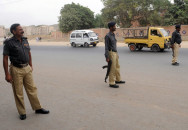


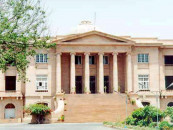
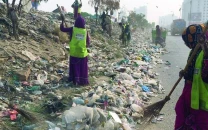












COMMENTS
Comments are moderated and generally will be posted if they are on-topic and not abusive.
For more information, please see our Comments FAQ